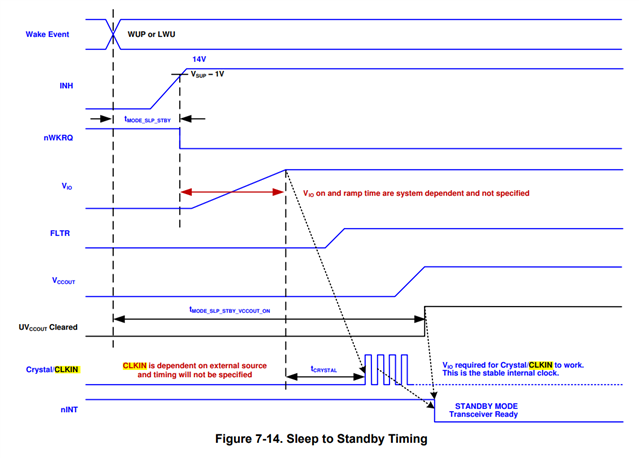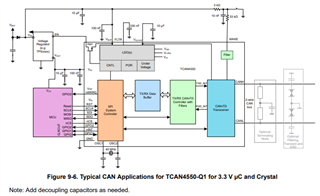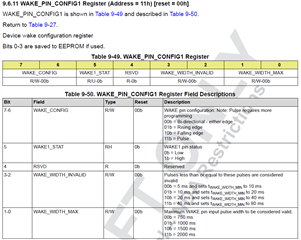Other Parts Discussed in Thread: TCAN4550
Tool/software:
Hello team,
Kindly ask two questions about time sequence:
Background: The MCU needs to be woken up with a TCAN4550, customer need to check which time point need to be set by MCU side.
Question:
1. Can the following CLKIN/Crystal time points be changed, and are there any requirements?
2. What are the requirements for the time points that need to be supported by the MCU during the wake-up process?
Thanks!





